Have you ever found yourself in a role where your responsibilities were as clear as mud? Or perhaps a team member feels stuck in a job description that hardly taps into their natural strengths, leaving them feeling underutilized and disengaged? If so, you’re not alone. Navigating the complexities of team roles and responsibilities can be challenging.
Understanding the essence of a team—its purpose, accountability, who it serves, and what it ultimately aims to achieve— is the first step towards clear-cut roles and responsibilities. By answering these pivotal questions, teams and their members can share vision and focused action.
When roles align with an individual’s strengths and the team’s purpose, the result is a motivated, engaged, and highly productive team. This synergy can elevate an individual’s job satisfaction and boost overall team performance. Leaders can move away from confusion toward organizational effectiveness through mutual understanding and clear roles. After all, isn’t that the ultimate goal of any team?
Key Takeaways:
- Role clarification goes beyond job descriptions; understanding and leveraging individual strengths can dramatically increase team effectiveness.
- Data-driven insights offer a strategic tool to better align responsibilities with team member’s unique skills and potential.
- Shifting roles and responsibilities based on data insights fosters better collaboration and optimizes overall team performance.
- Facilitating the understanding and application of team strengths can transform how roles and responsibilities are assigned.
- Harnessing data-informed decisions elevates individual performance and fosters a culture of continuous learning and improvement, which is crucial for strategic leadership.

What Are Team Roles And Responsibilities In The Workplace
Team roles and responsibilities in the workplace refer to the specific tasks and duties assigned to each team member and the expectations for their behavior and interaction within the team.
To further define, it’s helpful to untangle Role from Responsibility.
To empower individuals to perform at their maximum potential, their specific function within the team should be clear-cut and well-defined. Therefore, a ‘role’ pertains to an individual’s unique position within a team – this could be as a leader, facilitator, innovator, or implementer, among others. These roles are often closely tied to the person’s strengths and abilities, allowing them to contribute most effectively.
‘Responsibilities,’ on the other hand, refer to the specific tasks or duties the person is accountable for in their role.
For example, a team leader might be responsible for setting the team’s direction and making strategic decisions. At the same time, an implementer would be accountable for executing the plans and bringing ideas into reality. Clear responsibilities help ensure everyone knows exactly what they need to do, which allows the team to function more smoothly.

Free Playbook For Creating An Engaging Employee Experience even During Challenging Times
- What The Future Workplace Looks Like
- How To Activate Emotional Intelligence Within Your Team
- Factors Of Employee Motivation
- Strategies For Employee Engagement
- A Hybrid Work Model For Collaboration, Flexibility, & Fulfillment
- The Power Of Coaching In The Workplace
- How To Reduce The Impact Of Labour Turnover

The Power of Clarity: Why Defining Team Roles is a Game-Changer
Taking time to clarify roles and responsibilities is crucial not only for the individual but also for the team dynamics. A clear understanding of who does what prevents role overlap and redundancies, streamlining the workflow and averting potential chaos. The benefits extend beyond mere efficiency—it fosters an environment of mutual respect and understanding and cultivates a sense of purpose among team members.
But clarifying roles is not just about outlining duties in a job description. It’s about recognizing and harnessing each individual’s unique strengths to the team. Job descriptions on paper are two-dimensional, unable to capture the full spectrum of talents and aptitudes a person can contribute within their role. By highlighting these strengths, stakeholders can enable each individual to operate more effectively and derive greater satisfaction from their work.
Kickstarting meaningful conversations about roles and responsibilities begins with one key element: harnessing the power of insight! By understanding each team member’s unique strengths and capabilities, leaders can better articulate individual roles and responsibilities for high performance.
How To Empower Individual Contributors to Level Up In Their Role
Picture this: You have a team member with a defined role and a list of responsibilities. This individual possesses ideas, strengths, and competencies that can further their role’s effectiveness to support team responsibilities. They might even see opportunities to reshuffle their responsibilities, shedding some tasks while embracing new ones that better align with their talents.
They’re eager to stretch their wings, elevate their career, and take on more challenging responsibilities. Your team has been grappling with project management and meeting deadlines, and this individual is confident they can make a significant difference. Although project management isn’t currently within their purview, they believe in their potential for it to become an essential aspect of their role.
Enter Cloverleaf. The beauty of this tool lies in the power of its assessments to generate coaching insights that illuminate your team member’s strengths and areas for growth. Equipped with these insights, everyone on your team can engage in meaningful conversations with their manager about evolving their role.
And the best part? All it takes is a simple screen share to showcase your potential.
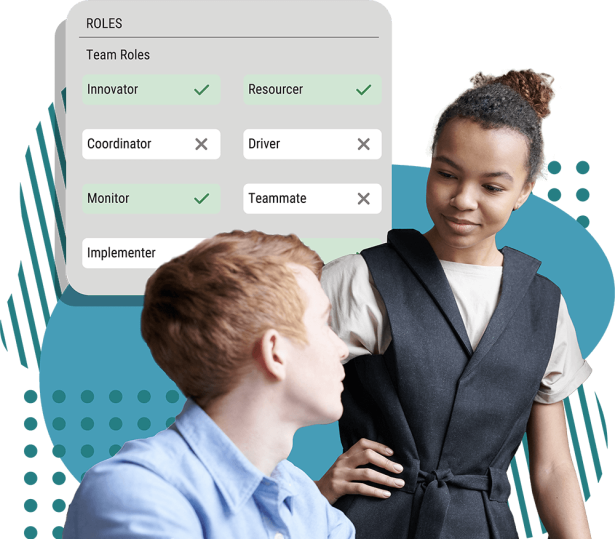
Imagine This Scenario:
Let’s say an individual becomes aware of their knack for coordinating tasks and ensuring timely deliverables—skills essential in efficient project management.
This person is ready to initiate a roles & responsibilities conversation with their team leader. Prepared with detailed insight into their unique abilities and strengths, they’re ready to show how they can make a crucial difference in a specific role.
Simultaneously, their manager can access insights about this person because they are both active within the Cloverleaf Dashboard. This data helps them visualize how they can help support diversifying this person’s role and identify their potential for a future leadership position.
Suddenly, the discussion about adjusting a role evolves into a long-term career development conversation. As a result, both people are enthusiastic and engaged, eager to unleash their potential.
Supercharging Team Role Clarification from a Manager’s Perspective
Busy managers need deeper insights into individuals to develop their roles and responsibilities within their entire team. Juggling various tasks with limited time can make organizing extensive team meetings focusing solely on defining these roles and responsibilities difficult. Therefore, they need a practical, at-a-glance solution to create clear roles and responsibilities.
Managers are often aware of areas within the team that need improvement. Take team structure as an example— if off, it can hinder overall success and require a reshuffling of responsibilities to leverage the team’s strengths better.
A comprehensive understanding of each individual’s strengths can improve problem-solving and increase the team’s success. If a manager wants to understand where the teamwork is breaking down, they should evaluate how strengths are dispersed within the team.
Diving deeper than job titles and descriptions by examining team member roles holistically can offer valuable insights into how leaders might leverage their team’s skill sets and proactively plan to address the gaps.
For instance, consider a team with numerous resourceful, driven individuals who struggles to bring projects to a successful conclusion. Here, a more detailed exploration of roles and responsibilities could illuminate critical areas for improvement.
In this scenario, the manager might initiate a team discussion about current roles and accountabilities. Through this dialogue, it comes to light that a team member tasked initially with driving projects strategically excels at coordinating the minutiae to ensure project completion.
Easily accessible insights with an at-a-glance view of team strengths help the manager make informed adjustments to roles and responsibilities. These shifts not only capitalize on the strengths of individual team members but also foster better collaboration and enhance overall team effectiveness.
Five Steps To Defining Team Roles and Responsibilities
1. Define Team Goals and Objectives: Start by clearly outlining what the team is accountable for. Identify the team’s goals, the tasks necessary to achieve them, and the skills and strengths needed to execute them effectively.
2. Identify Individual Strengths and Potential: Conduct an in-depth analysis of each member’s strengths, potential, and unique skills.
3. Clarify Roles and Responsibilities: Based on the team’s objectives and the individual analysis, define clear roles and responsibilities for each teammate. Ensure these definitions leverage the individual’s strengths and align with the team’s responsibilities.
4. Facilitate Open Conversations: Foster a culture of open dialogue within the team about roles and responsibilities. Members should feel empowered to discuss their roles, propose improvements, and suggest how tasks might be better assigned.
5. Monitor and Adjust: Regularly review and adjust roles and responsibilities based on ongoing team dynamics, changing project needs, and individual growth. This continuous review allows for optimal team utilization of skills and talents, leading to more effective collaboration and enhanced performance.
This process is not just about task distribution; it’s about harnessing each member’s unique strengths and aligning them with the team’s objectives. Remember, the journey to high performance begins with clarity around roles and responsibilities, followed by a commitment to adaptation when necessary.

Final Thoughts: How Data Transforms Team Dynamics
Small, data-driven insights often produce profound results concerning team dynamics and collaboration. Defining roles and responsibilities based on each team member’s unique strengths and talents, not generic templates, is a more intentional version of leadership.
Leverage the power of insightful data to empower your leaders and teams to reach their full potential. Uncover the hidden talents within your organization to ensure you’re drawing the best from everyone.
Data-informed decision-making can transform how teams work together to achieve their shared goals. It illuminates individual strengths, mitigates weaknesses, and promotes effective collaboration. With precise, data-driven role definitions and responsibilities, each team member is positioned to thrive.
Don’t just imagine the transformative power of such insights—experience it firsthand. Schedule a Cloverleaf demo today to see an all-in-one tool to help clarify roles and develop your people to be their best every day.
How we work has fundamentally changed in the last few years, with remote work becoming an increasingly common aspect of the modern workplace. As teams grow more geographically dispersed, companies face new challenges in managing remote employees and maintaining effective collaboration.
One of the most significant challenges remote employees face is the development of professional familiarity, which entails gaining insight into their colleagues’ work habits, strengths, values, and preferences related to their jobs. – fastcompany.com
At the heart of successful remote collaboration lies the ability to foster self-awareness and emotional intelligence within team members, which is essential for building strong connections and overcoming the social distance that can arise in displaced team environments.
This blog post will explore the importance of self-awareness and emotional intelligence in remote collaboration and strategies for engaging and motivating globally-dispersed teams.
As remote work continues to evolve and expand, organizations must understand the challenges and opportunities this new way of working presents. One key challenge in a hybrid work model is managing the social distance between team members working from home or in remote locations, which can lead to feelings of isolation and disconnectedness.
Organizations can reduce social distance, improve communication, and promote a more cohesive and collaborative work environment by developing self-awareness and emotional intelligence in remote team members.
In the following sections, we will delve deeper into the social distance, explore the benefits of fostering self-awareness and emotional intelligence in remote teams, and provide practical strategies and tools to enhance remote collaboration and communication. Additionally, we will discuss methods for engaging and motivating globally-dispersed teams to create a more inclusive and effective remote work culture.

Understanding Social Distance In A Geographically Dispersed Team
Social distance refers to the emotional connection, or lack thereof, among team members, particularly in remote work environments. As teams become more geographically dispersed, the potential for increased social distance can hurt team dynamics, leading to feelings of isolation and a lack of cohesion within the group.
Negotiation and leadership experts have long advocated for perspective-taking—attempting to understand your counterpart’s thoughts, feelings, and motives. The result is reduced social distance. – hbr.org
If employees feel disconnected, it becomes more challenging to establish trust, maintain open communication, and foster a sense of belonging, which are all crucial for effective team collaboration.
The Challenge Of Connecting And Coordinating In Dispersed Teams
In dispersed teams, connecting and coordinating with one another can be daunting. Differences in time zones, work schedules, languages, and cultural backgrounds can all contribute to the challenges of remote collaboration. As a result, team members may find it difficult to develop strong working relationships, share knowledge effectively, and stay aligned with their colleagues’ goals and priorities. This can lead to miscommunication, confusion, and a decline in overall team productivity.
In response to the diverse needs of its global community, Cloverleaf is refining its platform by integrating core features and functions in multiple languages. Currently, users can select Spanish or German within their dashboard and enjoy the Cloverleaf experience in their chosen language. This enhancement aims to provide a more inclusive and accessible experience for users worldwide.

Reducing social distance in remote work environments is essential for promoting effective collaboration and fostering a positive team culture.
EI is all about empathy, inclusion, and respect — traits that are more important than ever at a time when managers and employees have no idea what challenges their colleagues are facing… – forbes.com
Addressing social distance is a crucial management task for leaders of asynchronous teams, as it can directly impact overall performance and success. By minimizing social distance, leaders can help their virtual teams feel more connected, engaged, and supported. This, in turn, can lead to improved communication, a better understanding of colleagues’ perspectives, and increased teamwork toward shared goals.
Fostering Self-Awareness And Emotional Intelligence In Dispersed Teams
Self-awareness refers to an individual’s understanding of their emotions, strengths, weaknesses, and thought patterns. At the same time, emotional intelligence encompasses the ability to recognize, interpret, and manage one’s own and others’ emotions effectively.
Both self-awareness and emotional intelligence in the workplace are critical components of successful remote collaboration. They enable teammates to navigate complex interpersonal dynamics, adapt to diverse communication styles, and empathize with their colleagues’ perspectives.
The Benefits Of Self-Awareness And Emotional Intelligence In Remote Work
Developing self-awareness and emotional intelligence can significantly improve remote team collaboration in at least four impactful ways:
Better Communication: Teammates with emotional intelligence are more likely to express their thoughts and feelings clearly and constructively, facilitating open and honest dialogue within the team.
More Collaboration: Self-aware individuals are better equipped to recognize their strengths and weaknesses, enabling them to contribute more effectively and collaborate more closely with their teammates.
Cloverleaf’s assessment-driven coaching helps team leaders and members to adapt their leadership, communication, and behavior in real-time. The insights help teams uncover and leverage employee strengths and potential. Plus, individuals can see how diverse or similar their team is and how they complement one another.
Less Conflict: An essential aspect of cultivating high emotional intelligence within a team is consciously attempting to understand situations from each member’s unique viewpoint. Emotional intelligence helps teammates identify and address potential conflicts before they escalate, fostering a more harmonious workplace.
Stronger Adaptability: Emotional intelligence serves as a foundation for adaptability. Emotionally intelligent individuals can more easily adapt to changes and challenges, making them invaluable assets in the dynamic landscape of geographically dispersed teams.
3 Practices For Engaging And Motivating Globally-Dispersed Teams
To cultivate a robust sense of unity and teamwork within remote workers, consider adopting the following approaches: promoting transparency, nurturing a sense of community, and encouraging knowledge-sharing.
Embrace Transparency To Strengthen Trust
Establish Clear Goals And Expectations: Clearly define team objectives and individual responsibilities, ensuring everyone is aligned and working towards common goals.
Encourage Regular Communication: Promote remote communication among teammates through various channels, such as video calls, instant messaging, and check-ins.
Use A Coaching Approach: Adopt a leadership mentality responsive to employees’ needs, providing guidance, encouragement, and recognition when appropriate.
Cultivate Inclusivity: Encourage your team to be open to diverse perspectives, experiences, and ideas.
Facilitate Community-Building
To facilitate community-building among geographically dispersed teams, focus on implementing activities that effectively bridge the social distance between teammates. These activities can help foster trust, empathy, and a sense of camaraderie.
Examples include engaging icebreaker questions, scheduling virtual social events, organizing cross-functional projects, and offering training sessions to strengthen team-building, communication skills, and emotional intelligence skills.
Team Building Questions: Kick-off virtual meetings with icebreakers to help people get to know each other better.
Virtual Lunches Or Coffee Breaks: Schedule regular virtual social events where teammates can connect and chat informally.
Collaborative Problem-Solving: Consider projects that benefit from cross-functionality to streamline processes, brainstorm, and improve workflow.
Workshops And Training: Provide virtual training sessions to enhance team-building, effective communication, and emotional intelligence skills.
Encouraging Knowledge-Sharing
Encouraging a culture of knowledge-sharing and ongoing learning is essential for maintaining connectedness, engagement, and motivation within dispersed teams. To foster this culture, consider the following:
Creating A Centralized Knowledge Repository: Utilize a cloud-based platform like Google Drive or Dropbox where teammates can access relevant information, share files, and whiteboard.
Utilize Easy-To-Use Communication Tools: Implement user-friendly collaboration tools like Slack, Zoom, Asana, or Trello so that it is easy to contribute, find, and access information.
Hosting Virtual ‘Show and Tell’ Sessions: Designate regular team meetings to showcase projects and share learnings.
Celebrating Team Achievements: Acknowledge individual and team accomplishments regularly to help reinforce a sense of purpose and pride in the team’s work.
The Importance of Continuous Learning and Adaptation
As remote collaboration continues to evolve, so too must the strategies and practices used to manage and support dispersed teams. To stay ahead of the curve, organizations and team leaders must commit to reassessing virtual collaboration and procedures to ensure they remain effective.
Equally important is fostering a culture of ongoing learning and professional growth among employees, empowering them with the support, tools, and skills to excel in a virtual environment.
The momentum behind the global shift to remote work continues to grow, driven by organizations embracing flexible working arrangements to adapt to their employees’ diverse needs and preferences.
This reality underscores the importance of developing innovative tools, techniques, and best practices to facilitate effective collaboration among coworkers, regardless of their physical location.
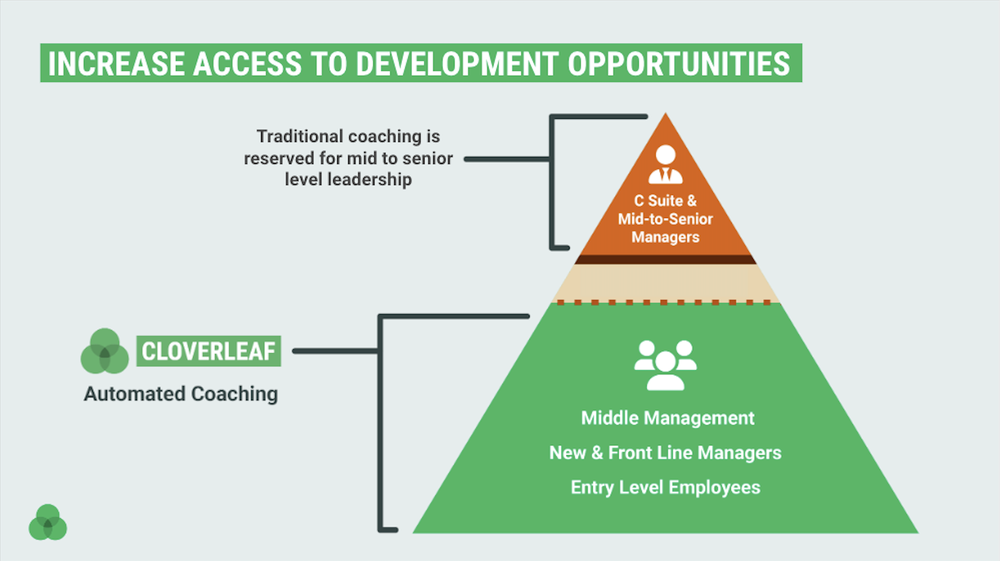
Placing emphasis on self-awareness, emotional intelligence, and community-building within dispersed teams enables organizations to maintain agility, productivity, and success in the constantly changing landscape of work. As geographically dispersed teams unite individuals with diverse backgrounds, cultures, and experiences, it is essential for organizations to foster environments that appreciate this diversity and encourage understanding, empathy, and mutual respect among team members.
Effective team-building icebreaker questions can do more than entertain – they can also increase team engagement and foster a more collaborative work environment.
WHAT ARE GOOD TEAM BUILDING QUESTIONS?
Good team-building questions encourage open communication, mutual understanding, and a sense of camaraderie among team members.
7 Qualities Of Good Team Building Questions
1. Promote Openness and Sharing: Framing questions to help encourage team members to share personal insights, experiences, and preferences can build trust and understanding among team members.
2. Be Inclusive and Respectful: The questions should be inclusive, considering team members’ diverse backgrounds and experiences. They should avoid sensitive topics that might make someone uncomfortable.
3. Foster Connection and Relatability: Effective team-building questions often relate to everyday experiences or interests, making it easier for team members to find common ground and connect on a personal level.
4. Encourage Positive Interaction: They should be light-hearted and fun, avoid contentious topics, and focus on eliciting positive responses that can lead to laughter and bonding.
5. Be Varied and Flexible: A mix of questions about personal preferences, hypothetical scenarios, and light-hearted choices keeps the activity engaging and caters to different personalities.
6. Align with Team Goals: The questions can also be tailored to align with specific team goals or themes, such as collaboration, creativity, or problem-solving.
7. Safe and Comfortable: They should create a safe space for sharing, where team members feel comfortable and not judged or put on the spot.
In essence, good team-building questions are those that not only break the ice but also lay the foundation for meaningful, more cohesive team relationships. They should be enjoyable and engaging and contribute to a better understanding and appreciation of each team member’s unique qualities.
How To Use Icebreaker Questions In Team Environments Effectively
Effective icebreakers help put people at ease and encourage open communication, making them a pivotal part of any team-building activity. Many people cringe or worry that team-building may feel awkward.
However, picking the right questions for team-building can help ensure you avoid negative reactions to the discussion. Ideally, effective icebreakers cut through social tensions as teams gather in person or in remote environments.
While leaders may feel a bit anxious the first time they incorporate icebreaker questions, these ideas for workplace improvement can help inspire more connection. And, the more a team seeks to know and understand one another, the process becomes easier and more acceptable.
Effective icebreakers can help create a positive and engaging environment for group activities, leading to better communication, collaboration, and relationships among participants.
Do you need help understanding your team’s personalities, communication styles, and work preferences? With Cloverleaf, you can access a variety of free personality tests for employees, including Enneagram, DISC, and 16-Types, to gain personalized insights into each member of your team.
6 Ways Workplace Ice Breaker Questions Can Build Stronger Teams
Carefully crafted icebreaker questions move teams beyond the basic information like personality type to inspire learning about:
Strengths
Weaknesses
Work Preferences
Communication Styles
Motivations
Conflict Triggers
Building personal connections with your team is critical for fostering collaboration and increasing emotional intelligence in the workplace. When members know each other on a deeper level, they are more likely to trust one another, communicate effectively, and work towards a common goal.
By leveraging assessment data, Cloverleaf provides personalized insights and Automated Coaching™ about every individual within a team. These insights can help inspire meaningful questions to unlock a team’s potential to communicate and collaborate effectively.
HOW TO INTRODUCE ICEBREAKER QUESTIONS
When it comes to introducing icebreaker questions to your team, it’s important to choose the right time and place. Springing these types of questions without warning can catch people off guard, resulting in awkward or flustered responses.
Alternatively, you can make these questions a regular part of your team’s routine by integrating them into daily or weekly stand-up meetings, newsletters, or even on a whiteboard in a common area.
The Best Strategies for Building Connections and Boosting Collaboration in Virtual Workplaces
Building connections within a hybrid work model has become more important as remote collaboration becomes increasingly prevalent. Adjusting to this new style of work can be challenging, and many remote workers struggle with feelings of isolation and imposter syndrome.
Incorporating questions that inspire learning about one another into your team meetings is an effective strategy for combating these feelings. Keep the exercise fresh and engaging by varying the types of questions at each meeting. This will help prevent the exercise from feeling repetitive or stale and will keep your members enthusiastic about connecting.
Let’s Move Your Leaders From A Boss to Coach!
Inside you'll learn:
- Strategies for developing essential leadership skills within your managers
- Best practices for communicating and coaching your team
- Insight for navigating conflict and change
- Practical ideas for enhancing teamwork and motivating team members
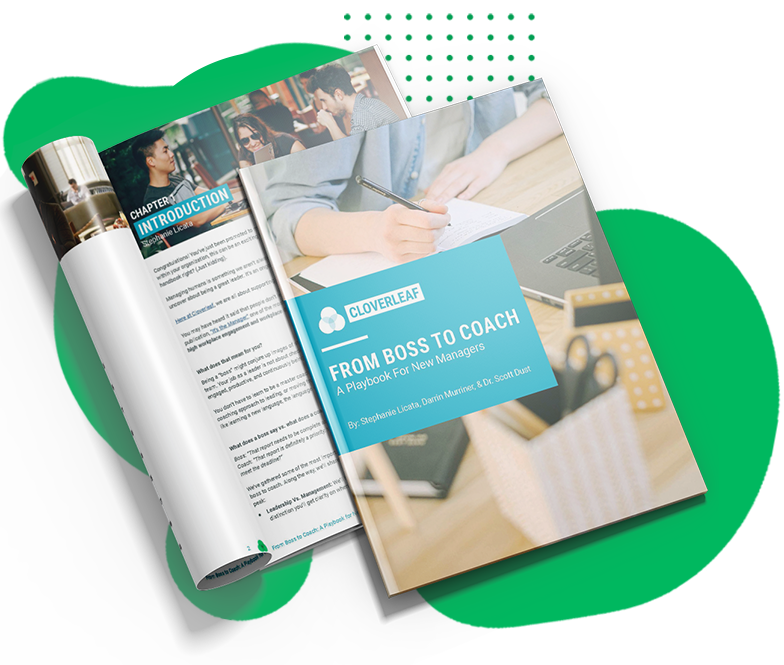
13 TYPES OF TEAM BUILDING QUESTIONS
Effective team building requires thoughtful consideration. Depending on factors such as your team’s timing, location, and unique dynamics, you may need to pivot to different lines of questions. To help guide this process, below are various examples of questions to draw on.
Keep in mind questions can be a powerful tool for building camaraderie and fostering collaboration in the workplace. However, it’s important to use them appropriately to avoid potential backfires. Before introducing team-building questions, ask yourself whether the question is appropriate for the situation and will contribute to building a stronger team dynamic.
17 General Questions To Learn More About Team Members
Workplace icebreaker questions can be a great way to learn more about your fellow team members in a low-pressure and light-hearted way.
If you could travel anywhere in the world, where would it be, and why?
What is a piece of advice from a mentor or family member that stuck with you?
What are some items on your bucket list?
Are you a night person or a morning person?
Do you have any hidden talents?
What would you tell your younger self?
What’s your favorite musical instrument?
What would you take with you if you were going to be stuck on a deserted island?
What was the best gift you got? Did you get it for your birthday, Christmas, or another celebration?
Do you consider yourself a dog person or a cat person?
What did you think about first when you woke up this morning?
Do you have siblings, or are you an only child?
Did you grow up in the country or the city?
Do you speak multiple languages? If so, which ones?
What’s your favorite family tradition?
Are you ever mistaken for someone else?
What’s your favorite book? Have you read it more than once?
6 Travel-Related Questions
Do you prefer to go to the mountains or the ocean?
Do you like hot weather or cold weather when you travel?
What country would you move to if you had the chance to move abroad?
What was your first vacation spot?
Have you been outside of the country?
Do you look for keepsakes when you travel to remember your trip?
10 Either-Or Questions
Marvel or DC?
Fall or spring?
iPhone or Android?
Beach or mountains?
Driving or flying?
Cold or hot weather?
Left or right-handed?
McDonald’s or Burger King?
Pepsi or Coke?
Ice cream or cake?
8 “If You Could” Questions
If you could have dinner with anyone, alive or dead, who would you choose and why?
If you could cure any disease or ailment, what would you choose?
If you could earn $500,000 to give up your smartphone for 2 years, would you do it?
If you suddenly became a billionaire, would you still work?
If you could experience something again for the first time, what would it be?
If you could go back in time 10 years and retain all your current memories, would you?
If you could have the choice to be famous, would you do it?
If you could earn $20 million dollars by giving up one important thing in your life forever, what would it be?
9 Job-Related Questions
What is your morning routine?
What is your dream job?
How did you leave your worst job?
What would your perfect office space be like?
Do you like working remotely or prefer to work in an office?
What work-from-home (WFH) accessory can you not live without?
What beverage do you prefer to drink while you work?
Do you feel more productive if you work at a specific time of day? Or in a particular area of your house?
Have you ever worked in your pajamas or sweatpants?
10 Childhood Icebreaker Questions
What cartoon character did you love growing up?
What’s your earliest childhood memory?
When did you get your first job?
What subject did you enjoy the most in school?
What subject did you like the least while you were in school?
Did you play on sports teams while in school? Or were you involved in a band or theater?
Have you kept any of your childhood hobbies into adulthood?
What toy did you take with you everywhere you went?
Did you ever have an imaginary friend? What were they like? What did you call them?
What job did you want to have when you grew up? Would you still take that job if you could get it?
What was your favorite costume to wear at Halloween?
9 “Would You Rather” Team Building Questions
Would you rather land your dream job or win the lottery?
Would you rather go to a loud party or a quiet get-together?
Would you rather retire early or work an easy career?
Would you rather be indoors or outdoors?
Would you rather drive or fly somewhere?
Would you rather scuba dive or hike up a mountain?
Would you rather work alone or with a team?
Would you rather lead a team or work for a great leader?
Would you rather have one long, 3-week vacation or three 1-week vacations?
11 Favorite Food Questions
What is your favorite food?
What is your favorite breakfast food?
What food do you never want to eat again?
What’s the weirdest food you ever ate?
What culture or country makes your favorite style of food?
What toppings would you put on your ideal pizza? How do you feel about pineapple and ham?
If you could only eat one kind of ice cream for the rest of your life, what would it be?
Do you prefer sweet, spicy, or savory snacks?
What fast food restaurant do you prefer? What do you order when you go there?
Do you like the drive-thru, or would you rather walk in to place your order?
What’s your favorite cocktail or alcoholic beverage?
10 Pop-Culture and Famous Person Questions
What’s your favorite movie?
What famous individual would you like to meet?
Do you know the lyrics to your favorite song?
What cartoon character best reflects your personality?
Who is your favorite late-night talk show host?
Who is your favorite superhero?
If you could only watch one movie, what would it be?
What is your favorite video game?
What genre of music do you like to listen to when you work? Is that your favorite genre?
What movie or show do you think is completely overrated?
8 Weird and Outrageous Team Building Questions
What is your biggest fear?
If you were a fruit, what fruit would you be and why?
Would you choose to fly or teleport?
If you could be one age forever, what age would you choose?
If you could bring back any trend, what would you choose?
Have you ever pretended not to see someone in public so you didn’t have to talk to them?
What’s the most embarrassing thing you’ve ever done?
If you were given $2M dollars to live in a dark room with no light for 30 days, would you do it?
If someone gave you one million dollars, what would you do with it?
9 Questions About Values And Purpose
If you could have any job in the world, what would it be?
What’s your biggest addiction?
If you were a teacher, what would you teach?
Who is your personal hero?
What’s the best gift you’ve ever received?
What’s the most important quality of a friend?
What product do you refuse to use or promote?
Do you do any volunteer work?
What personal traits do you dislike the most about yourself?
9 Music, Movie, And Book Questions
What is your favorite music genre?
What’s your favorite movie?
What’s your favorite book?
What’s your favorite TV show?
Have you ever acted? What was your role?
What’s your favorite song to listen to when you’re feeling down?
What was your favorite band in high school?
What’s the worst movie you’ve ever seen?
What’s your favorite childhood movie?
19 Funny Icebreaker Questions
Do you brush your teeth before or after breakfast?
What fashion trend from the 90s do you miss?
What embarrassing thing happened at your last job?
If you went on a talk show, what would you say?
Do you have a funny skill?
What do you have as the background on your phone or computer?
What was your worst haircut? Do you ever have bad hair days?
Have you named your car or vehicle? If so, what do you call it, and why did you pick the name?
What’s your favorite slang phrase or word?
Would you like to add a word to the dictionary? If so, what and why?
What color crayon do you think would taste the best?
Who gave you the worst advice you ever received, and what was the advice? Did you listen to it?
If a genie gave you three wishes, what would you wish for and why?
If the day suddenly had 25 hours instead of 24, what would you do with the extra hour?
What is your favorite emoji, and why?
What name would you pick if you were a professional wrestler?
Do you consider a hotdog to be a sandwich? What about a taco?
What is the weirdest dream you ever had? Do you ever have recurring dreams?
What would you do if aliens landed in your backyard?
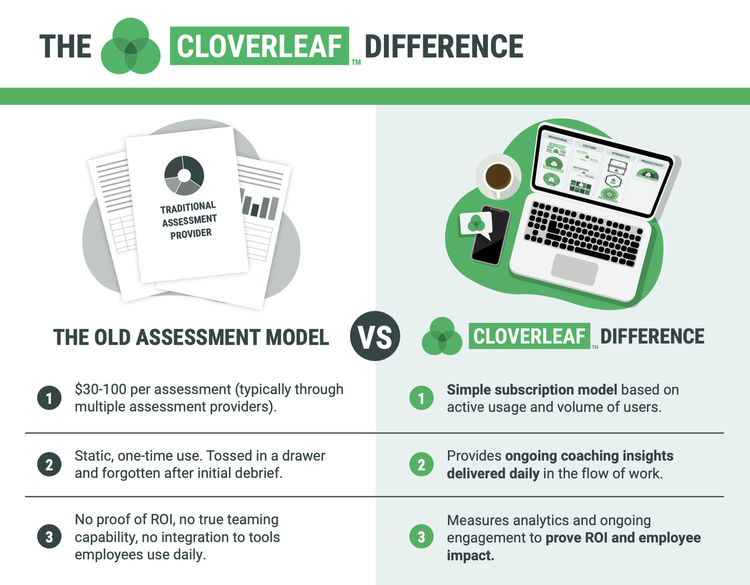
5 Affordable Activities to Cultivate Camaraderie and Improve Performance
After you ask team-building questions, you can move on to team-building activities to further strengthen the bond between your fellow team members. We recommend activities like:
#1: Trivia
Team trivia nights give you a chance to put the information you’ve learned about your teammates into action. Ask co-workers to send in ideas for questions about themselves, like “What is my favorite candy?” or “How many pets do I have?”
You may make these questions multiple-choice if your team is still getting to know one another. For example, you could have a question like:
What is the name of Linda’s cat?
A: Beatrice
B: Sweetpea
C: Marigold
D: Linda doesn’t have a cat
Make sure that you keep track of all the answers provided by your team members. The team member who gets the most correct answers should receive a small prize at the end of the game!
#2: Bingo
Set up a bingo game for a great way to indulge your team’s competitive impulses. You can find online bingo cards that allow you to send out sheets to everyone. Use a bingo set to roll for numbers or an online random alphanumeric generator.
Consider alternating the ” caller ” role to allow everyone to fill out a bingo card. Bring rewards for the winner to keep everyone engaged and excited!
#3: Charades
Charades represent a great way to get everyone moving and laughing. Assign teams to work together. Charades can even work for remote meetings, though you may need to give your teammates time to make space in their office.
Re-arrange teams throughout the game to allow different people to work together or let pairs of your employees bond as they strive to gather the most points during the game.
#4: Community Service
Consider giving back to the community as part of your team-building activities. Select a charity or organization that means a lot to you, and set up a time for your team to participate in a day of service.
Community service activities give you a way to get out of the office, but be sure to consider team member who works remotely.
#5: Team Coffee
Why not get out of the office for a while as part of a team-building activity? Take your team to a favorite coffee shop and find out what everyone prefers to drink. If you have a virtual team, everyone can get their own coffee and meet up for a Zoom meeting.
For an after-hours meet-up, consider a virtual happy-hour gathering. Everyone can mix their own drinks – or open a bottle of wine – and relax while focusing on something besides work.
Asking the Right Questions: Learning to Build Trust and Collaboration With Teammates
Ultimately, the decision on what questions to ask should be based on your unique team and situation. Consider factors such as team dynamics, individual personalities, and goals when selecting the most appropriate questions.
Think about teammates’ personalities, communication styles, and interests. Are they known for their sense of humor, or are they more reserved? Do they prefer to keep to themselves, or do they enjoy discussing their personal lives outside of work?
By considering these factors, you can select team-building questions that are more likely to resonate with your team members and encourage open communication and connection.
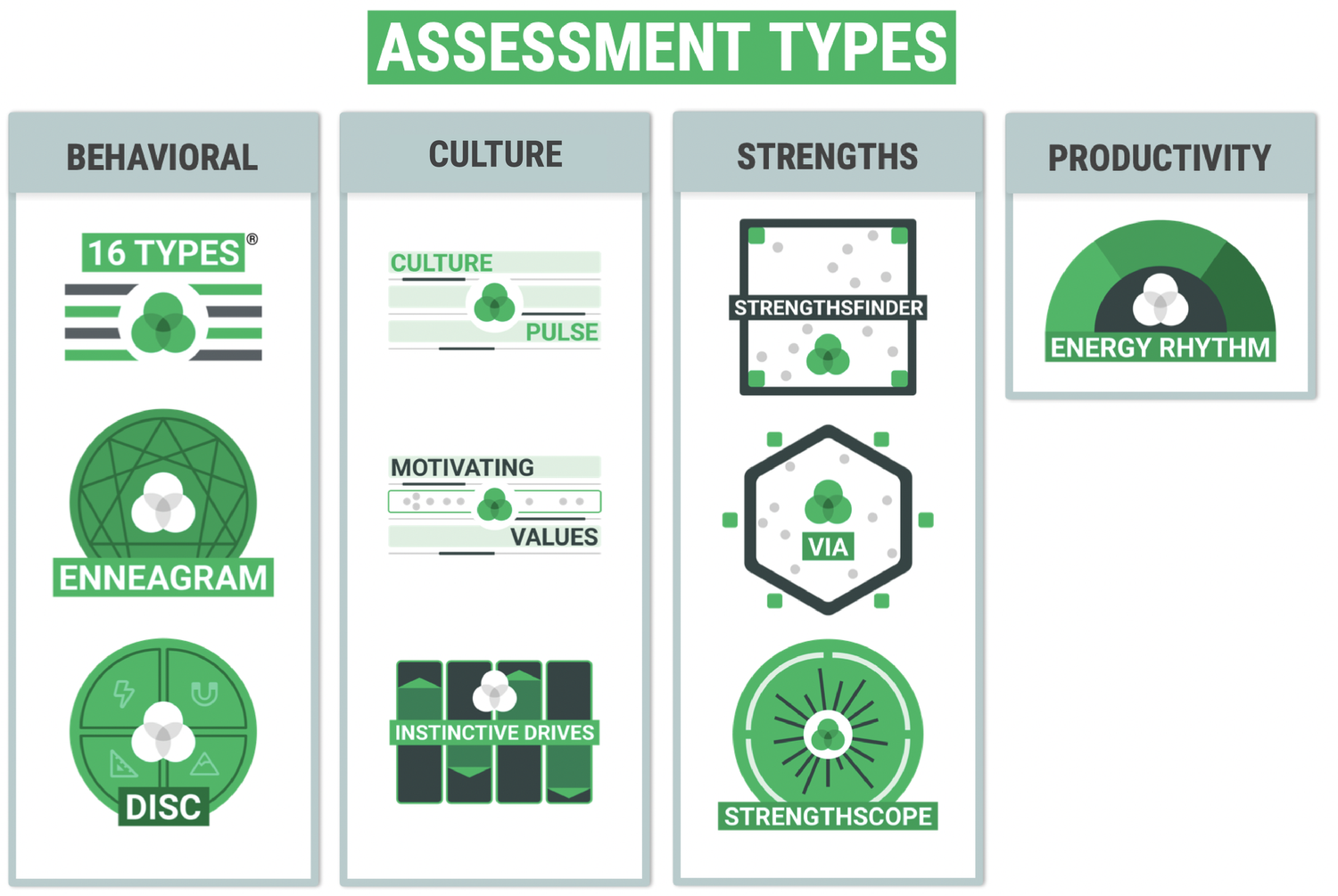
By tailoring your questions to individual preferences and characteristics, you can create a more personalized and engaging experience that encourages open communication and builds trust.
At Cloverleaf, we understand the importance of personalization and development in building high-performing teams. We turn assessment data into Automated Coaching™ to helps teams improve performance, increase collaboration, and build stronger relationships. To learn more about the unique insights and coaching, click the button above.
For organizations striving to improve their workplace experience, it’s critical to first evaluate the effectiveness of their leaders. According to Gallup®, managers account for at least 70% of the variance in employee engagement scores across business units. What does this mean? To explore ideas for workplace improvement, one might first consider ideas for improving management skills within their leaders.
An employee’s experience with their manager will outweigh their overall workplace experience.
Organizations must know by now about the importance of incorporating an employee engagement strategy and how it impacts the work environment team members experience.
Leaders responsible for people strategy must prioritize leadership effectiveness. To do so, they must raise expectations for all who lead within the organization.
A Healthy Workplace Environment Requires More Than Technical Management Skills
Managing is about organizing, transacting, sorting, and problem-solving. It’s the tactical side of leading. Effective leadership comes from honed relationship-building and communication skills.
It would be great for work cultures if people were born with innate leadership skills; however, this is not the case (which is still up for debate amongst many scholars!).
Technical expertise or subject matter knowledge often lands individuals in leadership roles, but these skills do not guarantee effective leadership. Leading, motivating, and developing others require distinct abilities beyond managing.
Successfully navigating uncertainty and the modern challenges of management requires a more emotionally intelligent workplace and leader. Leaders at every level need to engage in professional development consistently. Those who do stand to improve company culture, build relationships, and experience retention.

3 Central Ideas For Workplace Improvement
Evaluate Leadership Effectiveness Within Your Organization
Leaders must determine their effectiveness to improve workplace experience, job satisfaction among team members, and employee performance. This means evaluating leadership effectiveness across functions and at every level of leadership.
Establishing a baseline allows organizations to identify growth areas and develop ideas for workplace improvement. By taking action to support leaders in reaching their potential, organizations can create a culture of open communication and personal development.
The following survey questions can help your team assess leadership effectiveness throughout your organization: (It is best to use a Likert scale (strongly disagree, disagree, agree, strongly agree) to gauge critical areas like well-being, teamwork, and workplace culture.
14 Questions To Measure Leadership Effectiveness
My manager articulates clear and consistent expectations to me in a timely fashion.
I feel comfortable approaching my manager with questions or challenges.
My manager effectively communicates with our team as a whole.
I feel respected and valued by my manager.
My manager takes my ideas and feedback into consideration about work-related matters.
My manager is open to feedback from me.
When warranted, my manager gives me specific and relevant recognition.
My manager provides opportunities for me to grow and develop in my role.
I feel comfortable respectfully disagreeing with my manager.
Senior leaders clearly articulate company goals and values.
My manager gives me positive or constructive feedback in a timely manner.
Senior leaders are open to ideas and feedback.
I feel heard and respected by senior leaders.
(Open response). If there was one thing you wish you could change about your relationship with your current manager, what would it be and why?
Creating a feedback loop can help organizations demonstrate company values, share ideas, and support a positive work environment. Giving employees consistent opportunities to share their input openly and acting upon the data gathered is a surefire to engage your team.
After an organization establishes a baseline for leadership effectiveness, people strategy leaders can make informed decisions around initiatives to leverage leadership strengths and fill identified gaps.

Prioritize Coaching In The Workplace
Supporting leaders in their development will often require educating them on the importance of adopting a coach approach to leadership. Practicing a coaching approach to leading implores people managers to shift their focus from telling and directing to asking and developing others.
Mutual trust is essential in coaching relationships, but it takes time and consistency to build. When feedback or coaching is given without mutual trust, it can be difficult for employees to receive. Leaders must cultivate a psychologically safe and supportive relationship to foster a coaching environment.
Leaders Who Listen Create Engaging Workplaces
At the heart of coaching lies a simple yet powerful act: listening. Too often, leaders talk too much! It’s easier for them to tell, instruct, train, or share stories from their experiences. These management styles are sometimes valuable, but without applying a coach approach too, leaders create workplaces where people report feeling undervalued. Employees feeling undervalued and unrecognized can result in disengagement, a significant driver of the dreaded “T-word” – turnover.
Leverage Automated Coaching To Fast-Track Leadership Development
If organizations want to experience the benefits of coaching, they must provide their leaders and team members with the necessary tools to develop self-awareness. Doing so will also empower self-management and inspire collaboration throughout their teams.
Associating coaching with human resources, team-building activities, or training program initiatives is normal. And yes, training programs can help, but they often require a lot of planning, resources, and mindshare to get off the ground.
Automated Coaching is a faster, more effective way to develop the coaching muscles of the leaders, teams, and individuals inside an organization.
It’s no secret that leaders are busy and need efficient ways to help their teams strengthen communication, increase collaboration, and resolve conflicts quickly.
Daily coaching moments relevant to their schedule and interactions can help team members authentically connect. Experiencing in-the-moment coaching concerning themselves and how to manage their teams effectively can provide quick and subtle shifts to help leaders develop high-performing teams and engaged employees.
Every conscious decision to consider one’s leadership approach and the unique individuals one works alongside creates can add up to a positive work environment. The workplace will significantly improve as leaders and team members build mutual trust.
Encourage Work-Life Balance
Promoting work-life balance for employees is essential for improving the workplace and encouraging your team’s well-being. Employees with a healthy balance between their personal and work lives feel a greater sense of purpose and more willingly engage in their work.
It isn’t just about attracting talent. It’s retaining them. And that’s more important than ever… When employers support their employees’ work-life balance, they can enhance employees’ healthy lifestyles and keep them on board. – entrepreneur.com
By giving employees more control over their schedules, they can balance their personal and work life, resulting in greater job satisfaction and lower stress levels.
Many employers are also exploring hybrid work models that allow employees to work from home or other locations. This flexibility significantly benefits employees by cutting commuting costs, allowing them to lean into their work style and saving time.

Final Thoughts
People want to work and be part of a healthy workplace culture where they can contribute and grow. Leaders who practice coaching, understand the workforce’s desire for flexible work schedules, and recognize and appreciate employees’ unique talents will likely create a positive culture. Organizations that invest in workplace improvement focusing on leadership effectiveness foster environments where employees desire a future within the company.
The hybrid work model has become increasingly popular as it offers a unique blend of benefits, including increased engagement, autonomy, and collaboration. It represents a new work era where employees can choose where and when they work best, and organizations can foster a culture of trust, creativity, and productivity.
Although some employers may require a set number of days for hybrid employees to be in the office, a recent Gallup® poll shows that only 43% of employees reported having such a requirement.
Recently, Tuesday through Thursday appear to be the days that hybrid employees often choose to work in-office and are also the days that most employers require employees to work in-office.
Hybrid work has been around for a long time, but it’s evolved with new standards, challenges, and best practices. Companies are wisely exploring the best ways to balance in-office and remote work to meet the needs of their employees and the organization.
What Is Different About The Workplace Compared To Previous Years?
Following the COVID-19 pandemic, the work landscape experienced a transformation, with hybrid work models emerging as a new demand for employers to figure out. Below are significant factors that influence the meaning and significance of hybrid workplaces.
Rapid-Changing Technology
The widespread adoption of cloud computing, collaboration tools, and virtual communication platforms has made remote work more accessible and efficient. This has enabled organizations to adopt hybrid work models, providing employees with increased flexibility in where they work.
Changing Employees Attitude
COVID-19 accelerated the change in employees’ perspectives on work, with many now placing greater importance on work-life balance. This shift in attitudes has led to a growing demand for hybrid work arrangements.
What people are looking for isn’t flexibility of location. It’s the flexibility of time. The pandemic has shown everybody that we’re whole humans. All this hybrid talk misses the fact that it’s not the geography, the location. It’s the flexibility of being a whole human. – Marcus Buckingham
Employees care about balancing in-person and remote because it enables them to prioritize life outside work, leading to a more well-rounded and fulfilling life.
New Management Approaches
Bridging the gap between remote and in-person teams and facilitating seamless collaboration requires different thinking, new tools, streamlined processes, and transparent communication to ensure they have the resources to manage and support a hybrid workforce effectively.
Increasing Focus on Employee Wellbeing
Exploring how to motivate employees is driven by recognizing that happy and healthy employees are more productive, engaged, and likely to stay with the organization for longer.
It’s imperative for employers to understand and facilitate hybrid work models that acknowledge individuals’ humanity. If not, leaders will retain top talent and high-potential employees.

Free Playbook For Creating An Engaging Employee Experience even During Challenging Times
- What The Future Workplace Looks Like
- How To Activate Emotional Intelligence Within Your Team
- Factors Of Employee Motivation
- Strategies For Employee Engagement
- A Hybrid Work Model For Collaboration, Flexibility, & Fulfillment
- The Power Of Coaching In The Workplace
- How To Reduce The Impact Of Labour Turnover
Applying The Hybrid Work Model
The hybrid work model blends remote and in-person work for flexibility and better work-life balance. It is designed to accommodate flexibility within two primary dimensions; time and place, or in other words, when and where.
The Time Factor (When)
The time factor in a hybrid work model transitions employees from working synchronously with others to working asynchronously whenever they choose.
The Location Factor (Where)
This component allows employees to choose where they work. The options for a work location expand outside the office, including working from home or wherever the employee sees fit.
It’s best to envision both dimensions upon a quadrant because there is room for variation in how organizations exercise these two elements.
Office-Centric: Employees are expected to work in-office the majority of the time according to a mostly fixed schedule.
Remote-Centric: WFA is the only option for all employees and during times that are best for their schedule.
Time-Friendly: Employees can mostly choose their working hours but still require most of their time to be spent in the office.
Location-Friendly: Team members can work from anywhere but generally during the same times as others on the team.
Hybrid Work Model: A truly hybrid work model exists with fluidity for teams to shift within the quadrant according to the team and individual needs. Doing so gives team members autonomy and trust while expressing expectations for remote collaboration and teamwork.
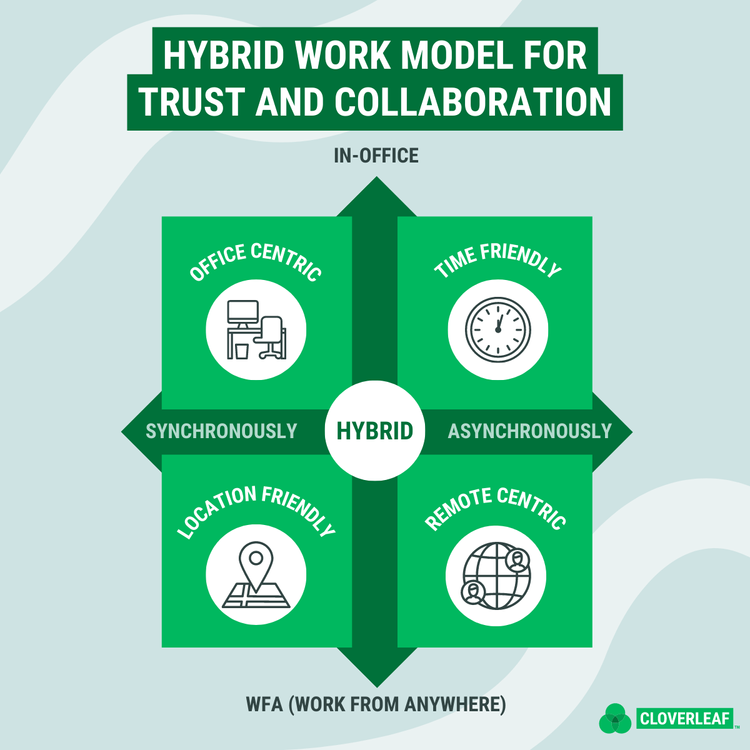
Hybrid workers view their work as a “flow.” Hybrid workers are willing to work outside traditional work hours to balance their personal needs during the day.
As you can imagine, this flexibility is especially beneficial for individuals with unique situations, parents with children, or who prefer to manage their time and responsibilities with deeper trust.
How To Determine Which Model Is Best For Your Team
There are several questions to ask to help decide how your team can start implementing or improving your hybrid work model:
Based on the Hybrid Work Model, what extremes exist within our team, and how can we move them closer toward the center?
Which areas of our organization are suited for hybrid work?
What processes and workflows are necessary to support this environment within our organization?
What tools can we implement to support efficient, timely, and collaborative communication?
What values must our leaders adopt or model to influence supportive behavior within this environment?
Organizations can ensure that their hybrid work model is effective and sustainable in the long term by prioritizing communication and collaboration and investing in the right tools and workflows.
Adapting To A Hybrid Work Model Could Help Improve Your Culture
Hybrid work offers several advantages, such as improved work-life balance, reduced burnout, higher productivity, and less commuting time.
Hybrid work environments promote a sense of ownership and accountability among employees. With the ability to work in remote and in-person settings, employees naturally experience more autonomy and trust to manage their workloads and schedules, fostering transparency and open communication.
Additionally, the increased flexibility and focus on work-life balance can result in higher employee morale and well-being, contributing to a more positive and supportive work environment. Moreover, remote work can help reduce turnover and attract new talent who value flexibility and independence.
Adapting to remote work options is one of the strategies for increasing employee engagement. When employees can choose where and when they work, they feel more in control and can tailor their schedules to meet their personal needs. For more on this, visit the post: Creating An Employee Engagement Strategy For A Human-Centered Workplace.

Who Wants To Work From Home Or At Office Or Both?
The desire for remote work or a hybrid work model varies depending on the individual and their personal preferences, work style, and job responsibilities. Some people may prefer the structure and routine of working in an office, while others may enjoy the freedom and flexibility of working from home. Others may find that the ideal solution is a hybrid model that allows them to split their time between working from home and the office.
Many companies are now finding that not all of their employees don’t want to come back to the office; their older employees don’t want to come back to the office. Younger employees actually do because, for people in their twenties in particular, the office is a source of social connection. –Jason Feifer, entrepreneur.com
The success of remote and hybrid work models has led to a greater emphasis on results-based performance rather than the number of hours spent in the office.
It could be that people don’t want to be back in an office all day, every day. Because the problem is that nobody has thought about what happens next when somebody returns to the office. People don’t want to just be in a room. Nobody cares about that. People want connection. Maybe there’s a different way to do that. –Jason Feifer, entrepreneur.com
Clearly, the workforce desires more from their work and employer; they want meaning and fulfillment. People want their life and work to matter and to flow seamlessly together as much as possible. Hybrid work models could be a way to achieve greater levels of flexibility, collaboration, and fulfillment.
Best Practices for Hybrid Work Environments
While hybrid work models offer several benefits, they also come with their own set of challenges. Hybrid employees may face difficulties accessing work resources and equipment or experience feelings of disconnection from the company’s culture and their colleagues.
Maintaining work relationships with teammates can also be more challenging for hybrid workers, affecting team dynamics and collaboration. Additionally, it can be difficult for hybrid workers to develop their careers within an organization if there is a decrease in personal and professional familiarity with their colleagues and managers.
To overcome these challenges, companies must proactively strategize to ensure that hybrid workers fully integrate into the company culture by providing resources, tools, and support to facilitate their success.
To capitalize on the benefits of hybrid work while steering clear of the potential detriments, leaders, and employees should consider the following three suggestions.
Define Work-Home Boundaries
Working remotely can lead to increased productivity, providing best practices are implemented to set up a conducive work environment to minimize distractions.
Set boundaries with family members
Block off non-negotiable times or days to work
Create a workspace conducive to productivity
Individuals can minimize distractions and maintain focus during work by defining these boundaries and communicating them when necessary. For tips, visit the post: How to Stay Happy and Productive While Working Remotely.

Prioritize Team Building
Hybrid work arrangements can lead to less in-person interaction with teammates. This limitation is potentially problematic, affecting trust and information sharing. Therefore, it is essential to incorporate team-building activities into hybrid work environments to create opportunities for employees to interact with each other, share common interests, and build camaraderie.
Here is a list of virtual ideas to help your team get started:
Coffee breaks
Designated lunch hour where remote and in-office workers can chat over lunch in break-out rooms
Trivia
Book clubs
Fitness challenges
Happy hours
Collaborative music playlists
Designated communication channels to share non-work updates or life events
With some creativity and intentionality, hybrid teams can build strong relationships and collaborate effectively, regardless of their physical location.
Practice Consistent Communication
Virtual leadership can be complex in a hybrid work model. Regular check-ins are a great way to establish a time for communication between leaders, teams, and teammates.
Establishing a cadence for check-ins within a hybrid work model should happen in several contexts that primarily include:
All-Team (think once a quarter)
Leadership Team (think once a week)
Manager and Team Member (think once a week)
Peer To Peer: (think project-based, as frequently as necessary)
Finding a cadence to ensure productivity without micromanaging is crucial to maintaining trust. Technology like Calendar Sharing, Zoom, Slack, or 15Five facilitates efficient information sharing among team members.
Conclusion
Hybrid work models are no longer a trend but a new standard in the modern work environment. As hybrid work becomes the new standard, companies must be prepared to embrace this new way of working and create a supportive and inclusive environment for their employees. Although there are many ways teams can experiment with hybrid work, organizations must understand that a successful model requires a shift in mindset and an intentional strategy.
Research suggests that a dismal 15% of employees worldwide actively engage in their place of work. This is unfortunate, as findings suggest that engagement is related to a host of beneficial outcomes, including performance, job satisfaction, and organizational commitment.
Over the last decade, we’ve come a long way in figuring out how to measure engagement. We’ve also made great strides in figuring out how actually to increase employee engagement. The challenge, however, lies in the execution. Organizations that do it well will experience the greatest return on their investment.
Concerning this, outlined below are several aspects of implementing a successful employee engagement strategy. You’ll also find the nuanced difference between engagement and motivation, along with evidence-based recommendations of the specific metrics and drivers of engagement to ensure you get it right with your team.
What Does Employee Engagement Mean?
The most widely-cited academic definition of engagement is a positive, fulfilling work-related state of mind characterized by three dimensions:
Vigor – high energy and mental resilience
Dedication – a sense of significance, enthusiasm, inspiration, pride, and challenge
Absorption – being fully concentrated and deeply engrossed in one’s work.
Interestingly, organizational settings often provide a broader conceptualization for understanding engagement factors. Feeling energized at work through vigor, dedication, and absorption is one of four formative engagement indicators.
The other three are: feeling a commitment to the organization, identifying with the organization, and feeling satisfaction from their job.
With this conceptualization, engagement is not just how the employee feels while working but also their relationship with their job and organization.
This broader context helps explain why engagement surveys ask about much more than just energy at work.
SIDE-BAR: Is engagement the same thing as motivation?
Many people confuse engagement with motivation. Technically, engagement is one form of motivation, assuming that engagement leads to some change in behavior (e.g., more effort, more prosocial behavior, etc.). However, more clearly understood, motivation considers a process whereby the intensity and persistence of a targeted effort are observed.
Therefore, when organizations refer to engagement, energy, job satisfaction, organizational identity, and organizational commitment, it is a combination of factors representative of heightened motivation.
Which Engagement Metrics Are Most Important?
When implementing engagement surveys, you need to consider two metrics: dimensions and drivers.
The first and most apparent set of metrics entails measures of the four dimensions of engagement.

The 4 Dimensions Of Engagement
Energization: the amount of inspiration, enthusiasm, and intensity an individual draws from immersing their self in their work
Commitment: the amount of care and dedication an individual feels toward the organization
Identification: the amount an individual believes their work organization aligns with their values and things they deem to be meaningful
Satisfaction: the amount of contentment and fulfillment an individual experiences as a result of their work.
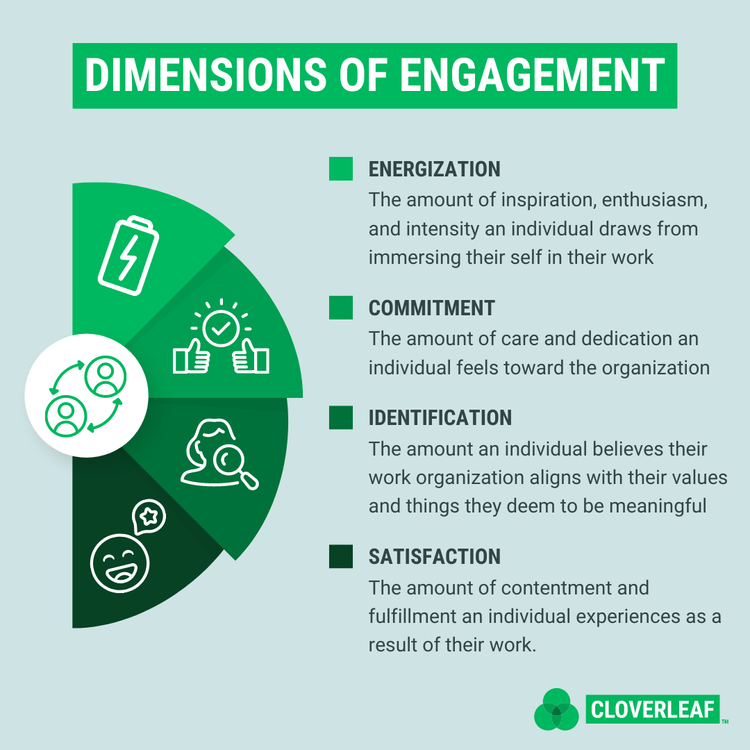
This baseline for measuring engagement helps increase understanding so that you can track whether certain engagement metrics are increasing or decreasing across time.
The second set of metrics entails the predictors (also called drivers) of engagement. Or, in other words, the actual levers that are causing engagement to increase or decrease.
Across an assortment of organizations that offer employee engagement tools, their internal research suggests that some of the most critical drivers of engagement include excellent leadership, career-growth opportunities, non-toxic work environments, and collaborative teams.
11 Effective Drivers Of Engagement In The Workplace
High-Quality Leadership
Leadership & Career Development Opportunities
Meaningful Work
Work-Life Balance
Inclusion & Belonging
Healthy Work Cultures
Recognition
Feedback
Autonomy & Empowerment
Supportive Team Members
Equitable & Competitive Compensation
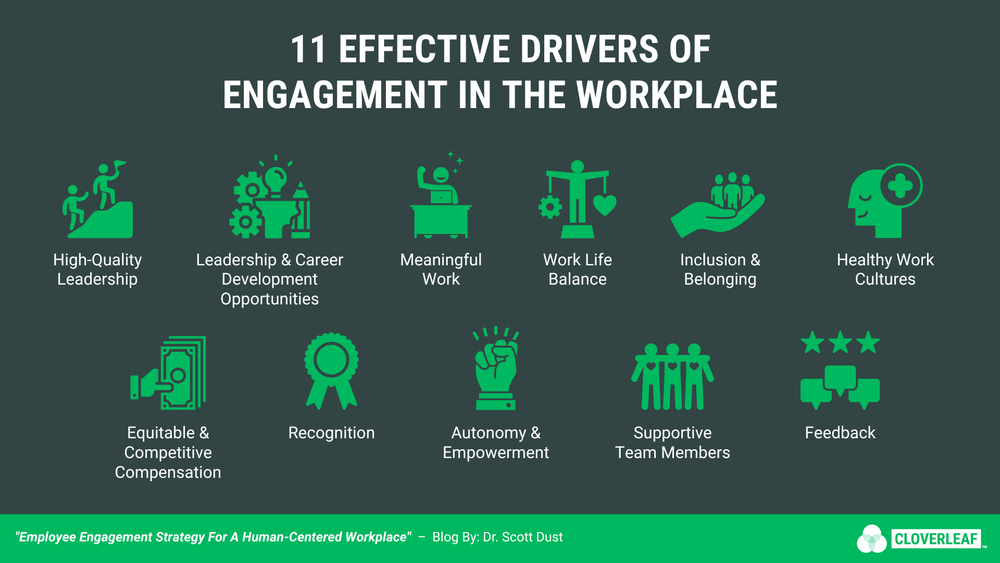
SIDE-BAR: Any guesses on which predictor is consistently one of the most impactful drivers of engagement? Supportive leadership.
Employees that have leaders or managers that are respectful, transparent, and supportive is the clear winner.
Additionally, a recent predictor is a significant consideration concerning an employee engagement strategy: time affluence.
Post-pandemic, employees are beginning to express that they want more than work-life balance but also tools (e.g., high-quality virtual meeting tools) and systems (e.g., work-from-anywhere or work-anytime) that facilitate employees’ ownership of when and where they’ll work.
7 Ideas To Create An Employee Engagement Plan
1. Provide a leadership development program for managers and supervisors to assist with upskilling leadership within your organization.
2. Implement opportunities for personal development in the workplace to strengthen leadership and career skills by supporting training unique to team members’ roles.
3. Provide coaching opportunities for employees to help them grow personally and professionally.
Cloverleaf serves daily Automated Coaching™ tips that help employees increase self-awareness and emotional intelligence, fostering a physiologically safe workplace and team effectiveness.
4. Offer remote work options, including the ability to work from home or other remote locations and flexible schedule options, to empower employees to manage their work and personal commitments better while still achieving their job responsibilities.
5. Facilitate open communication among employees by implementing the following strategies:
Encourage two-way communication between management and leadership and among teammates.
Practice transparency by sharing information about the organization’s goals, plans, and performance to build trust and understanding.
Encourage collaboration by creating opportunities for cross-functional teams, project-based work, or group problem-solving.
Use technology like Slack and 15Five to facilitate faster and easier communication.
Celebrate teamwork by recognizing and rewarding teams and individuals who work together, support one another, and model your organization’s values.
Work hard to clearly communicate the organization’s mission and values to employees and ensure that their work aligns with these goals.
Facilitate regular, timely, and constructive feedback.
6. Recognize and reward employees for their contributions to the organization. Use a tool like Bonusly that includes both formal and informal ways to acknowledge and appreciate team members.
7. Provide employees with equitable and competitive compensation packages aligned with their skills and experience. Regularly review and adjust compensation packages to ensure they remain competitive in the marketplace.

These characteristics of the future workplace experience represent trends changing employee expectations of their leader and teammates. Employers can prevent toxicity and promote an effective employee engagement strategy by actively implementing a plan that values teamwork and collaboration.

Free Playbook For Creating An Engaging Employee Experience even During Challenging Times
- What The Future Workplace Looks Like
- How To Activate Emotional Intelligence Within Your Team
- Factors Of Employee Motivation
- Strategies For Employee Engagement
- A Hybrid Work Model For Collaboration, Flexibility, & Fulfillment
- The Power Of Coaching In The Workplace
- How To Reduce The Impact Of Labour Turnover
Critical Components For A Successful Employee Engagement Strategy
Implementing an employee engagement strategy is crucial for organizations; however, there are three key components to ensure it is effective and successful:
Surveying Employees
Interpreting The Results
Acting On Results
This process should be ongoing, focusing on identifying positive and negative contributors affecting engagement and the measurable next steps based on the results. Doing so can better ensure that the organization continuously improves its engagement strategy and fosters a human-centered workplace.

When And How To Survey Employees
Organizations typically use engagement surveys in one of three ways:
Annual Benchmarks
Ongoing Pulse
Initiative-Based
1. Annual Engagement Surveys
These surveys tend to be lengthy, in-depth, and have a mix of quantitative (e.g., 1 = strongly disagree, 5 = strongly agree) and qualitative (e.g., open-ended text response) questions. These surveys give organizations a broad annual benchmark for how they’re doing.
2. Pulse Surveys
These are typically around five questions and are pushed out to participants from weekly to monthly. These shorter surveys tend to have higher participation when the questions are quantitative and straightforward.
The benefit of the pulse survey approach is that it ensures organizations know what’s happening throughout the entire year, in the moment. This allows organizations to make adjustments promptly. Tools like Officevibe can assist leaders in making this process easier.
3. Initiative-Specific Engagement Surveys
These use customized questions relevant to the initiative to ensure immediate and targeted feedback.
Organizations will inevitably change as their industry evolves or objectives are rolled out as strategies. Planning a well-timed engagement survey in coordination with this effort can help keep things on track.
How To Interpret Employee Engagement Survey Results
Analyze the data to figure out which predictors are changeable or worth changing. The goal should be to understand the most influential predictors of low engagement scores. Some engagement tools automatically conduct these analyses.
When interpreting these results, it’s best to only focus on one or a few key metrics at a time. Changing too much too quickly will make it challenging to understand what is working or not and how best to apply the findings within your employee engagement strategy.
What To Do With The Results
One of the quickest ways to see employee engagement survey participation drop is to fail to act on the results. It’s best to be transparent about the results, show how the results compare to similar organizations, and communicate a clear action plan on what they will do to improve specific metrics.
These communications tend to work best when leaders add a narrative that can help interpret the results at the organizational level. Then managers can use the results at the team level or during one-on-ones’ with direct reports.
Perhaps, one of the biggest challenges with engagement tools is that they are heavily weighted towards diagnosis but not prognosis.
Engagement tools are great at understanding what’s wrong, but they aren’t built to help organizations understand what to do about it. Typically, these solutions must be customized to address the organization’s specific context.
By understanding when and how to conduct employee engagement surveys, interpreting the results, and taking action based on those results, organizations can gain valuable insights to improve the plan continuously.
3 Common Questions and Concerns About Employee Engagement
Should we use an engagement tool service or do it ourselves?
Although engagement tools can be expensive, the key benefit is that they ensure the engagement responses are anonymous. If an organization sends out a survey to employees, the employees will inevitably assume that their responses can be tracked back to them individually.

No matter how much an organization promises that the responses will be confidential, it isn’t likely to land with employees. Relatedly, engagement tool services typically set a threshold for which there must be a certain amount of responses before data are revealed. This policy can increase employee response rates since they know they won’t be exposed if they make a qualitative comment in a survey that could be traced back to them individually.
Another critical consideration is whether the engagement tool service will allow you to view data at the individual level or not. Sometimes engagement tools only give access to the aggregated reports, which makes it hard for organizations to understand the nuances of their findings. For example, aggregated findings can hide outlier data that could be the source of a brewing issue or accidentally cover up the fact that the data distribution is bi-modal, with half the employees rating low and the other half rating high on a particular metric.
What should we do if the employee participation rate is low?
One of the most important things organizations can do is have senior leadership express why surveys are being implemented and how they will be used to make employee-friendly changes.
Also, as previously mentioned, organizational leaders must act on the data. If they don’t, employees will perceive that their participation is not worth the time.
Additionally, organizations should dial in the length and cadence of the surveys. The longer and more often, the lower the participation.
Low participation rates are problematic. Without a complete sample representation, the results might be inaccurate or directly signal that the employees are disengaged.
How are machine learning and artificial intelligence being used in engagement surveys?
Although some organizations are starting to implement sophisticated algorithms that help deliver suggestions to users of engagement tools, it’s not quite reached the threshold of being considered machine learning.
Machine learning would entail outputs from the system being automatically reintegrated into the algorithm so that it updates (i.e., “learns”) in real-time, generating better and more tarted results on the next iteration.
Along those lines, organizations should not assume technology can solve engagement issues.
The recommendation here is to take a “tech-first approach,” which recognizes that people can’t process data with the same accuracy and efficiency as machines, so using technology to be the front line that helps direct people’s attention is worthwhile. Nonetheless, people and social systems are complicated, and it takes people capable of critical thinking and intuition to ensure the direction is ideal.
Conclusion
Employee engagement is a crucial aspect that organizations cannot afford to neglect. Ignoring engagement can lead to unhappy and unproductive employees, resulting in a detrimental impact on the overall performance of the organization. But why settle for mediocre results when it’s possible to achieve greatness? By understanding the importance of employee engagement, organizations can create a roadmap for success by identifying what to measure, how to measure it, and a plan for taking action on the results.
Without a strategy to engage your team, it will probably never happen. Using a plan while measuring what is effective will help prevent guesswork and provide clarity for your team.
In short, investing in an employee engagement strategy is not a luxury but a necessity for organizations that want to achieve their full potential and stay competitive in today’s market.



